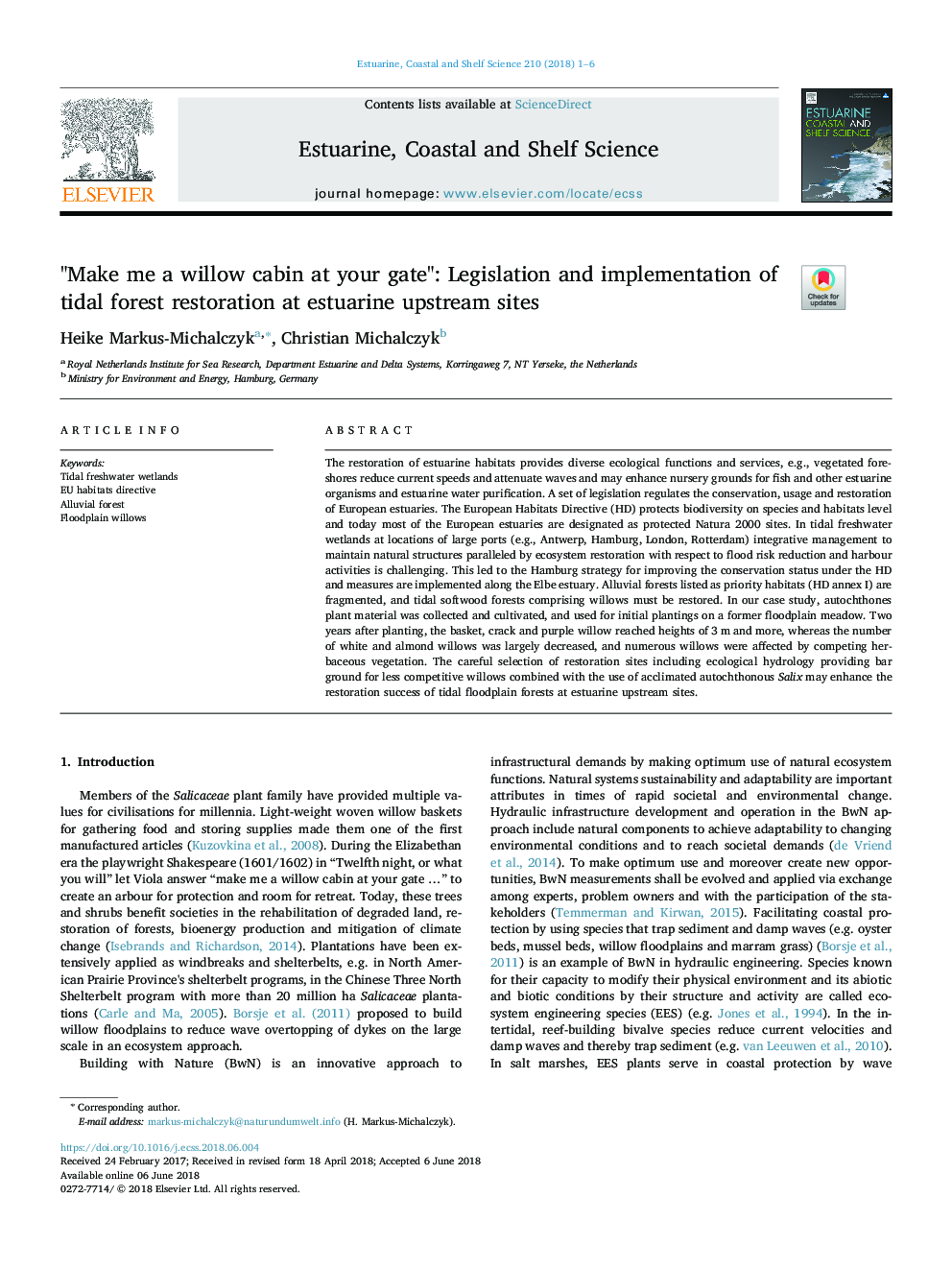| Article ID | Journal | Published Year | Pages | File Type |
|---|---|---|---|---|
| 8884626 | Estuarine, Coastal and Shelf Science | 2018 | 6 Pages |
Abstract
The restoration of estuarine habitats provides diverse ecological functions and services, e.g., vegetated foreshores reduce current speeds and attenuate waves and may enhance nursery grounds for fish and other estuarine organisms and estuarine water purification. A set of legislation regulates the conservation, usage and restoration of European estuaries. The European Habitats Directive (HD) protects biodiversity on species and habitats level and today most of the European estuaries are designated as protected Natura 2000 sites. In tidal freshwater wetlands at locations of large ports (e.g., Antwerp, Hamburg, London, Rotterdam) integrative management to maintain natural structures paralleled by ecosystem restoration with respect to flood risk reduction and harbour activities is challenging. This led to the Hamburg strategy for improving the conservation status under the HD and measures are implemented along the Elbe estuary. Alluvial forests listed as priority habitats (HD annex I) are fragmented, and tidal softwood forests comprising willows must be restored. In our case study, autochthones plant material was collected and cultivated, and used for initial plantings on a former floodplain meadow. Two years after planting, the basket, crack and purple willow reached heights of 3â¯m and more, whereas the number of white and almond willows was largely decreased, and numerous willows were affected by competing herbaceous vegetation. The careful selection of restoration sites including ecological hydrology providing bar ground for less competitive willows combined with the use of acclimated autochthonous Salix may enhance the restoration success of tidal floodplain forests at estuarine upstream sites.
Related Topics
Physical Sciences and Engineering
Earth and Planetary Sciences
Geology
Authors
Heike Markus-Michalczyk, Christian Michalczyk,
